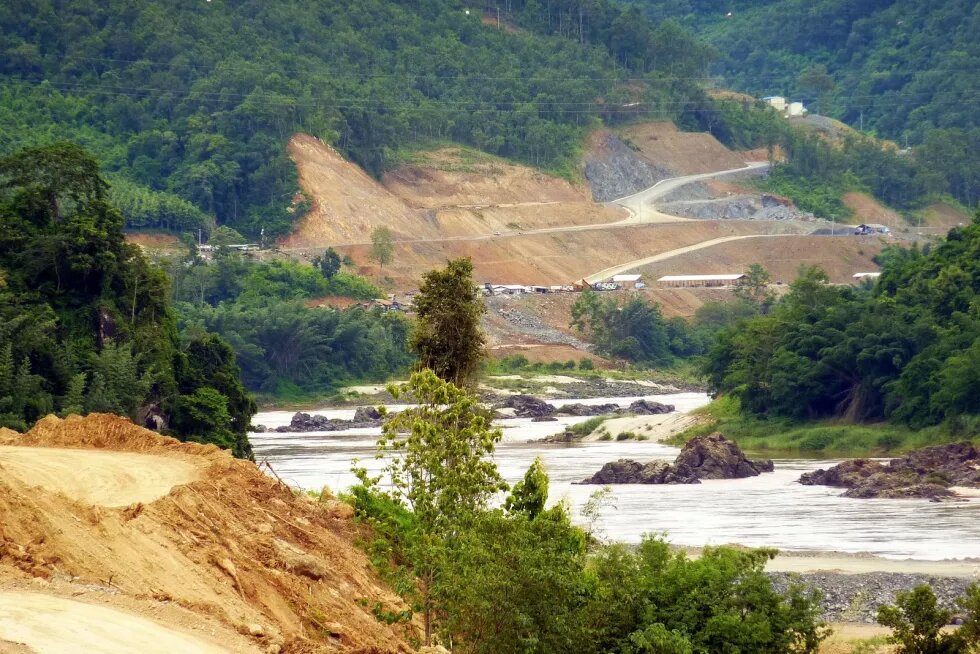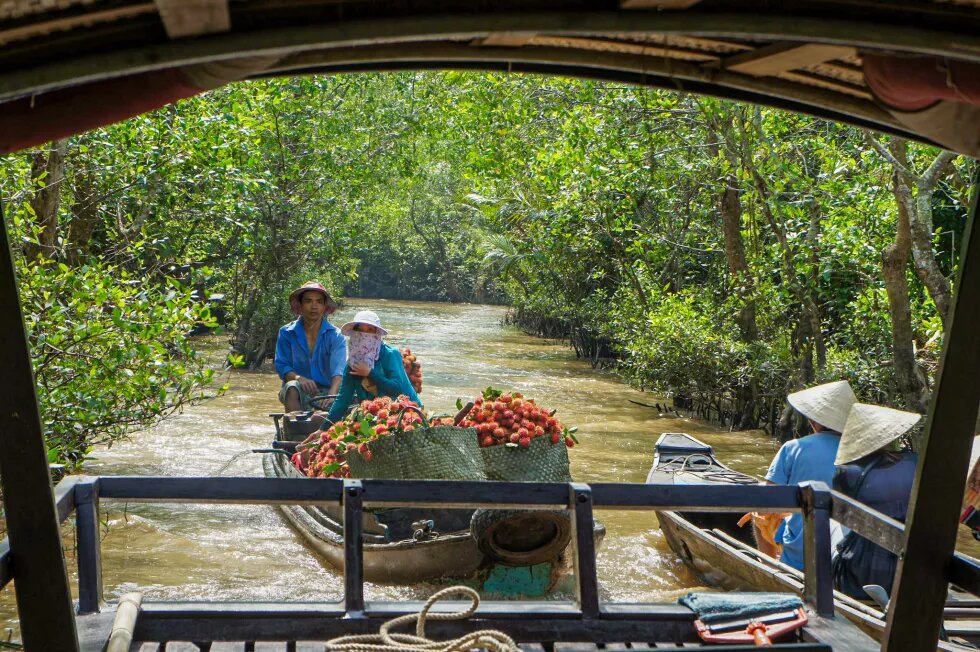
Amidst the promising economic prosperity and development in the Southeast Asian region, the growing energy demands to sustain it comes with a price. In this article, we reveal how securitizing environmental issues and promoting policy dialogues can lead to sustainable environmental governance in the Mekong region.

Summary
The Mekong River which has been the source of livelihood to farmers and fisherfolks and also an essential link to cultures and traditions due to its diverse ecology in riparian countries is threatened by the expansion of hundreds of dams apart from the 11 hydroelectric dams operating on the upper mainstream of the Mekong River, and the 78 dams in Laos. In its bid to become Southeast Asia’s “battery”, environmental security has been neglected due to the weak governance of Cambodia, Laos, and Myanmar.
Addressing environmental security requires sustainable management and protection of natural resources and ecosystems to ensure they are available for future generations. It also requires taking measures to mitigate and adapt to the impacts of environmental threats, including through policies that promote sustainable development, conservation, and environmental justice.
Analysis
The literature on “environmental security” has recently shifted attention to the Mekong region in view of its rising strategic importance to Southeast Asia and external powers. Riparian countries are damming the Mekong at all costs to meet growing energy demands and sustain economic growth. As of 2022, there were 11 hydroelectric dams operating on the upper mainstream of the Mekong River, or Lancang River, in China, some of which are on a very large scale, including Nuozhadu (5.850MW), Xiaowan (4.200MW), Jinghong (1.750MW), Manwan (1.570MW) and Dai Chaoshan (1.350MW). In Laos, around 78 dams have been built in the last 15 years, with at least 250 under construction or planned for its hundreds of rivers and streams in its quest to become Southeast Asia’s “battery”. Among the largest hydropower dams in the mainstream Mekong River, Xiaowan and Nuozhadu hold about 45% of the active storage of all major dams in the Mekong Basin.
While hydropower dams have expanded upriver, ample evidence explicitly demonstrates that these developments are causing serious ecological, economic, and even health problems in downstream regions, hydrology data appears to undermine their new-found strengths. Some widely-recognized trans-boundary impacts of upstream hydropower dams have caught the media’s attention and increased academic concerns in recent years. These include the following: serious trapping of sediment flow, irreparable ecological losses, flood pulses, and intensified droughts. Some studies report that about 163 million tons of sediment (60% of the total sediment in the Mekong River) that once freely flowed down the river to Tonle Sap Lake and the Mekong Delta are now allegedly cut off behind dams in China (Quang and Eyler 2022[1]). Since the mid-2010s, the synergistic effects of Chinese hydroelectric dams and climate change have become more evident, causing more damage to agriculture, fisheries and the environment in the Lower Mekong Delta. China’s dams have the ability to reduce total wet season flow by 10% to Stung Treng, Cambodia. The Mekong Dam Monitor offers a clear picture that the impact is profound, especially farther upstream and greatest during wet seasons which lack sustained monsoon rains such as those in 2019, 2020, and 2021.
While trans-boundary water access has not yet sparked major disputes among basin countries, the potential for non-traditional security challenges is looming large. For example, in Cambodia, the unique flood pulse of the Mekong River and the Tonle Sap Lake nourishes the production of rice, their primary food product. Unfortunately, increasing numbers of communities are experiencing dramatic reductions in rice crops, fish catches, and suffer from ecological threats associated directly from the upstream hydropower dam construction that has altered the water and sediment flow.
According to a recent study, “Riverine food environments and food security: a case study of the Mekong River, Cambodia”, [2] the projected production loss alone on capture fisheries in Cambodia is between 40% and 57% by 2030. The sociological and economic impact directly impacts food security on the lives of anywhere between 6.4 million and 21 million people without access to their staple protein source. While it’s true that fishers and farmers along the river have lived with the seasonal droughts and floods, the perfect storm convergence of climate change and dams has resulted in major upheavals in agricultural practices and changing livelihoods. This is particularly evident in the Mekong Delta, where generations of rice farmers harvested their rice paddies have relied on the Lower Mekong’s thousands of river arteries to water their crop, but today the challenges are disastrous for farmers, like Nguyen Hien Thien, a 61 year-old rice farmer, who poignantly summarizes the problem: “Too much water and, more often, too little,” in a Washington Times article.
The Lower Mekong Delta has been assaulted by changes in weather, rising sea level, biodiversity depletion, and industrial pollution. The once fertile and ecologically-rich delta, where millions of small-scale farmers, pastoralists, forest keepers and fishers scratch a living from floodplains and wetlands, and responsible for regional food security, has also seen production losses and shifts among generational farming families. A World Bank report reveals that over the past two decades, disasters in Vietnam attributed to climate change have resulted in significant economic and human losses due to droughts, severe storms and flooding. The mounting environmental pressures on rice farmers especially appear to be unsustainable under the present climate change era.
Across the lower Mekong riparian countries, including in China’s Yunnan province and Lao’s Luang Prabang province, thousands of villages whose culture is so intimately linked to the ecology of the Mekong estuaries have been displaced to make way for dams and infrastructure projects. After decades of controversy over resettlement policies, natural and ethno-cultural heritage sites ― a critical mosaic of the Mekong-nurtured ecosystem ― are under siege from ambitious hydropower and development projects. After all, the environmental changes evident in deteriorating agricultural lands, water shortages, and pollution have led millions of residents to leave their family plots of land and flee to the cities for a new life. The Greater Mekong Subregion has also witnessed an increasing migration associated with uneven economic integration and growth, socio-economic vulnerabilities, and disparities between countries (McMichael & Healy 2017).[3]
As the inter-state complicated relations persist, and the politicization of external powers’ presence grows in the Mekong, the regional security now demands both the prevention of inter-state divergence and the fulfilment of human development and amenities. Some suggest that environmental security plays an important role in satisfying the former and a key to the latter (Westing 2013, 1986; Hassan, Afridi & Khan 2017; Skripnuk, Kikkas & Romashkina 2019). The focus on environmental security in the Mekong is highly relevant since it is an effective way to promote the political awareness and buy in from citizens to resolve environmental problems. It also allows for understanding the hedging strategies in the non-confrontational, yet thorny bipolar competition between the Sino and American-led Mekong cooperation and partnership initiatives. Our paper argues that environmental problems fuel the likelihoods of social instability and inequality, and are likely to exacerbate transboundary tensions over development. But an overstated, undesirable “securitization” of the environment may appear to restrict the range of means available for resolving environmental problems.
Nationally, the hedging development strategies of Southeast Asian Mekong states are at odds with the regional vision of collective prosperity and sustainable development. This only succeeds in highlighting a lack of intra-bloc coherence and a murky prospect for regional security. While the impact of existing institutional frameworks by external actors, that promise to underscore the downstream Mekong countries’ centrality and connectivity, remains to be seen, individual states should manage themselves to find the right way to address the trade-offs between economic growth and environmental security.
While securitization of the environment is under-represented in existing cooperation mechanisms and frameworks in the Mekong region, environmental degradation and attendant consequences, such as re-emerging zoonotic diseases, food and water insecurity, remain in itself a severe threat to human and national security. Cambodia, Laos, and Myanmar have weak governance and are highly vulnerable to environmental insecurity. Also, Laos and Cambodia are core Mekong countries where dramatic land usage changes, in the form of land grabs, and forest loss continues to occur in the Mekong Basin. As a result, environmental insecurity hangs like a dark cloud over the rural lives of too many lives in the Mekong Basin and mainland Southeast Asia at large.
Addressing environmental security in the Mekong region, therefore, requires the need for a political leadership to ensure the collective security of all Mekong citizens above and beyond traditional security interests. By securitizing environmental issues and promoting policy dialogues with the public’s interest in mind can and will contribute to cooperative and sustainable environmental governance.
__
Nguyen Minh Quang is a senior lecturer from Can Tho University and co-founder of the Mekong Environment Forum.
James W. Borton is a senior fellow at Johns Hopkins University and the author of Dispatches from the South China Sea: Navigating to Common Ground.
The views expressed in this article are not necessarily those of Heinrich Böll Stiftung.
References
[1] Quang, N.M. and Brian Eyler (2022). Trung Quốc ở Tiểu vùng Mê Công: cạnh tranh địa chính trị và tác động đối với khu vực. Journal of International Studies 3(130): 135-152.
[2] Manohar, S., Downs, S., Shaikh, S., Mak, S., Sok, S., Graham, E., ... & Fanzo, J. (2023). Riverine food environments and food security: a case study of the Mekong River, Cambodia. Bulletin of the World Health Organization, 101(2), 140-148.
[3] McMichael, C., & Healy, J. (2017). Health equity and migrants in the Greater Mekong Subregion. Global health action, 10(1), 1271594.




